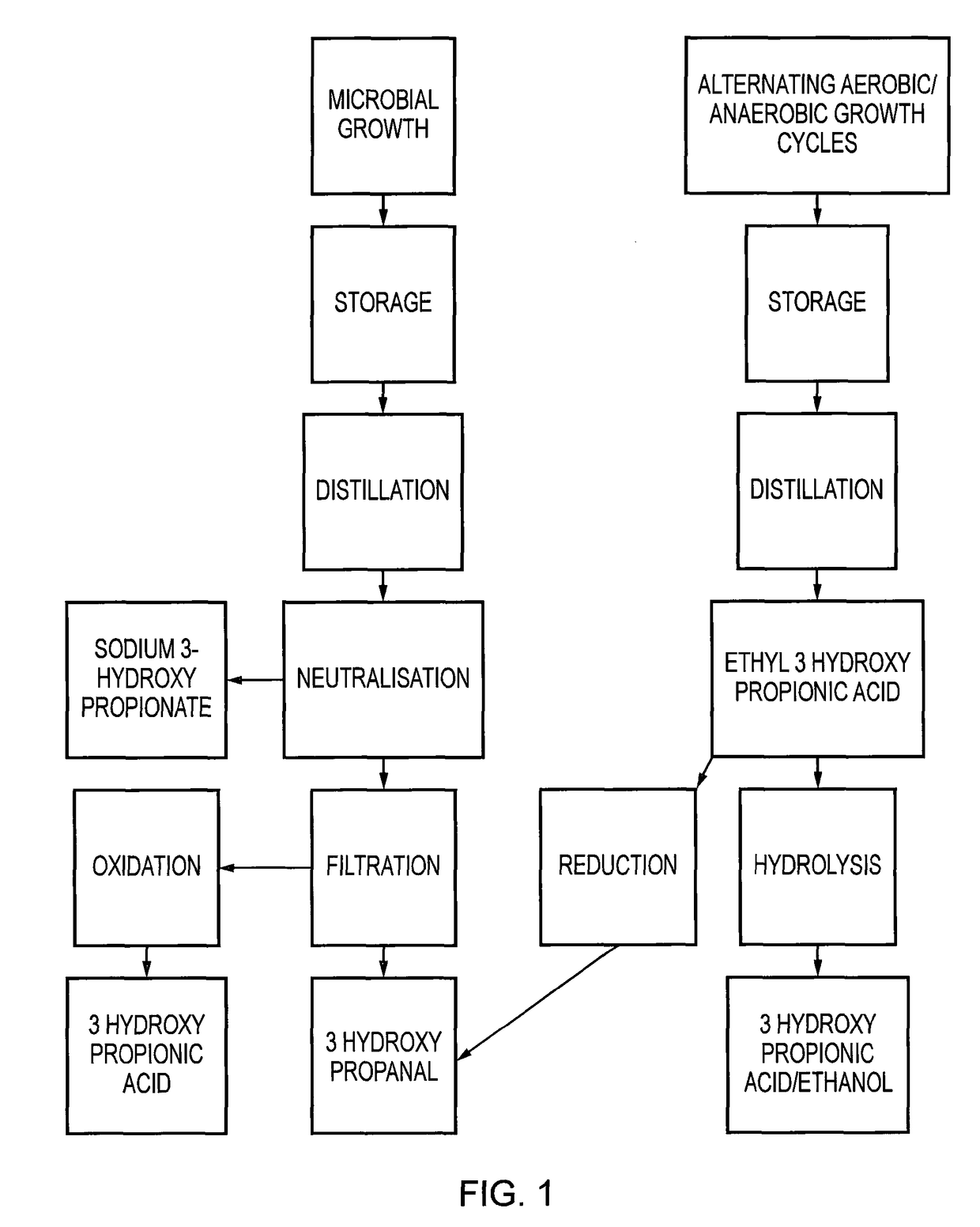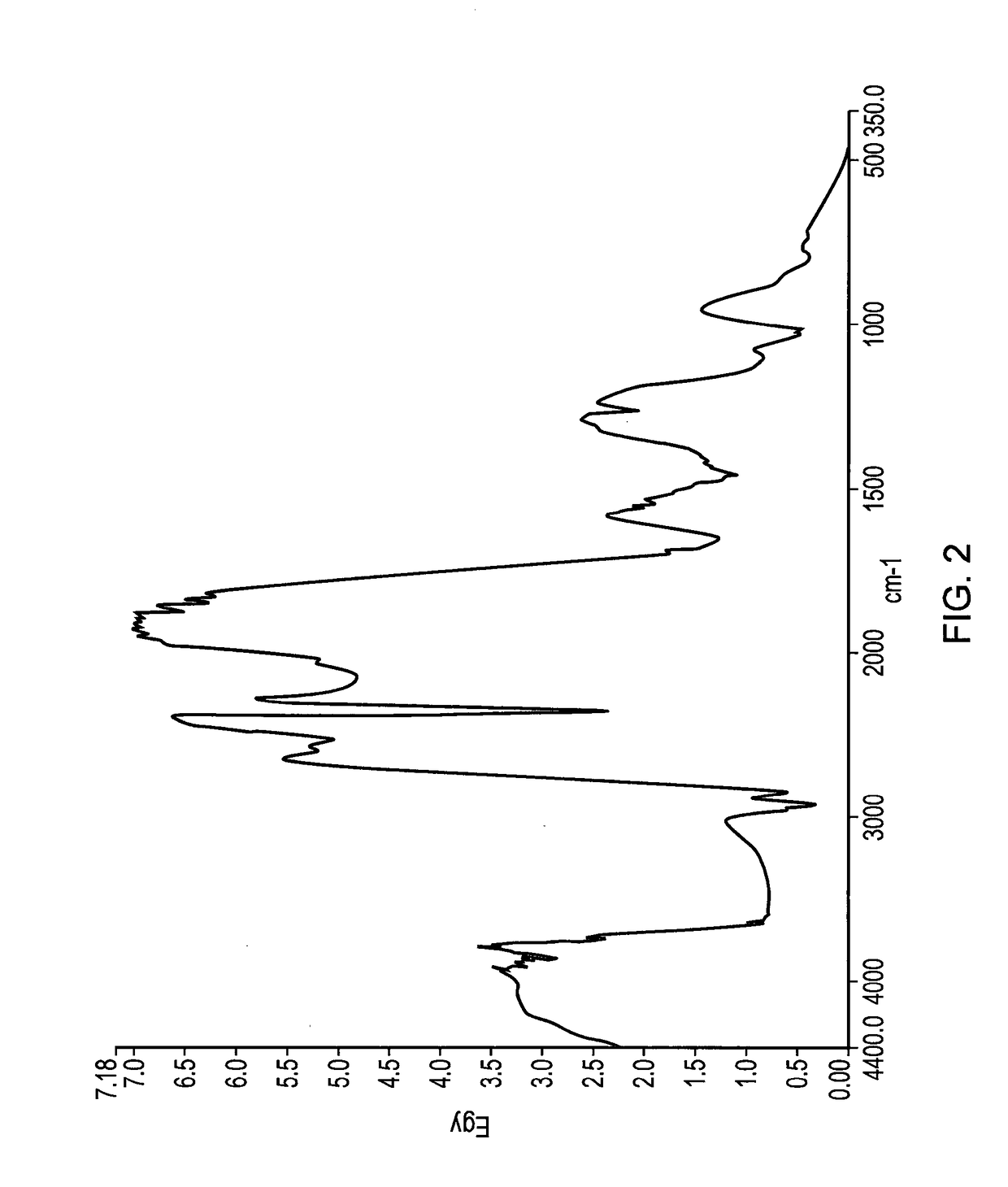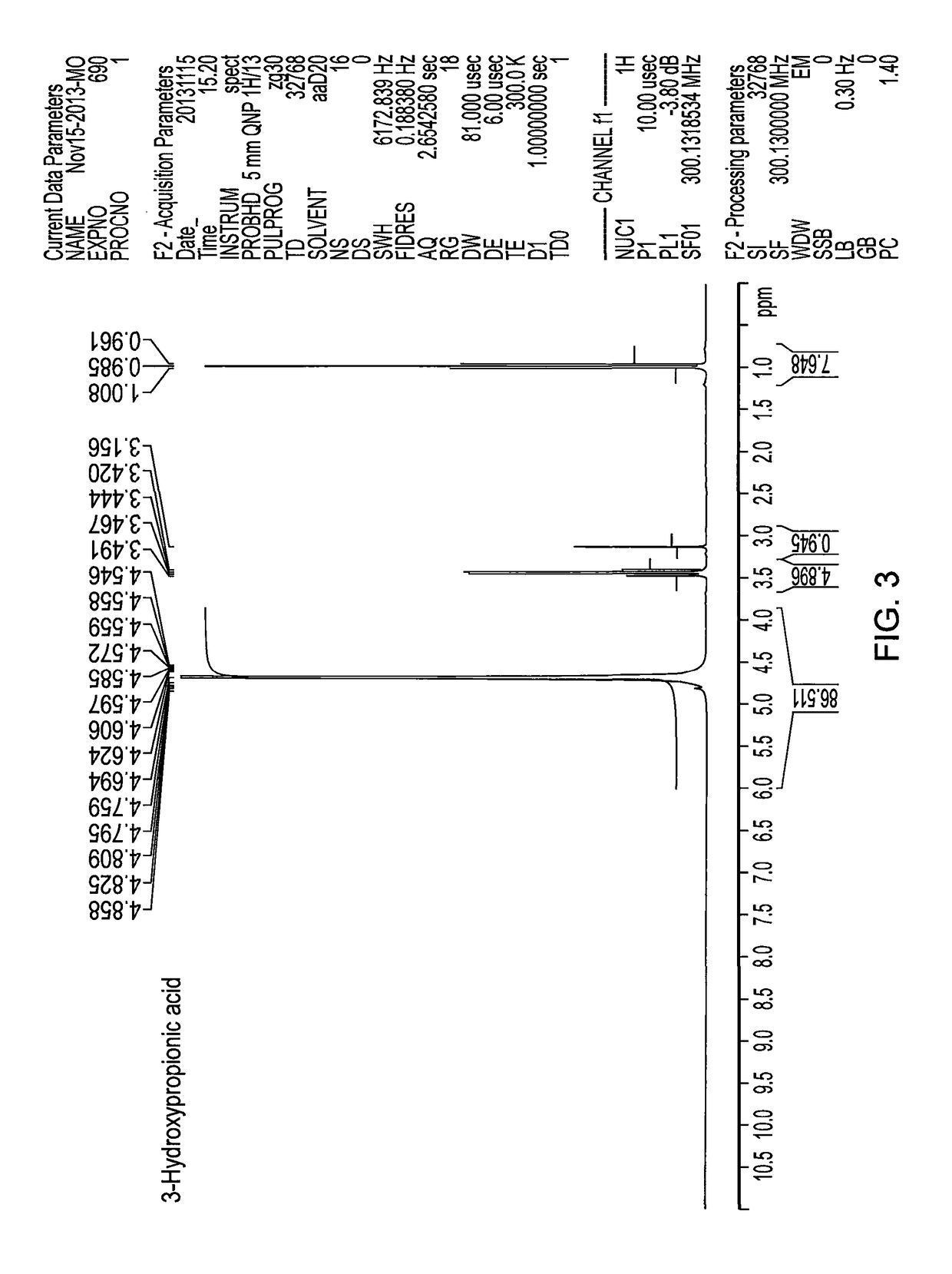Method for producing 3-hydroxypropanal
a technology of 3-hydroxypropane and propane, which is applied in the direction of ultrafiltration, distillation separation, membranes, etc., can solve the problem of high ph loss of activity
- Summary
- Abstract
- Description
- Claims
- Application Information
AI Technical Summary
Benefits of technology
Problems solved by technology
Method used
Image
Examples
example 1
h of Organism on Carbon Dioxide as Sole Source of Carbon
[0065]The organism when grown in the presence of elevated levels of phosphate and nitrate achieves yields of 0.07 g / l / h dry cell weight at 20° C. Under these conditions the organism achieves the production of 0.267 g 3HPA / l / h / g dry cell weight of organism. This equates to a level of synthesis of 6.41% or 64.152 g / l / g / dry weight in a 24 hour period.
example 2
h of Organism on Carbon Dioxide and Alternating Between Cycles of Aerobic and Anaerobic Growth—Synthesis of 3HPA as the Ester
[0066]By taking the culture through alternate cycles of aerobic growth where 3HPA and acetate form and then anaerobic growth where the acetate is reduced to ethanol and esterifies with the 3HPA to form ethyl 3-hydroxypropionate, elevated levels of 3HPA can be recovered in the ester form without loss of activity of the organism. Carboxylic acids, aldehydes and ketones are all capable of esterification. The ester form is biologically inactive as a biocide, but can be used directly in conversion to acrylates or 3-hydroxypropionic acid with the recovery of ethanol.
example 3
of 3HPA in the Ester Form by Addition of Ethanol to the Distillate
[0067]Ethanol can be added to the spent bacterial media to be distilled. This forms the ethyl ester of 3HPA which is more volatile and easier to recover. The 3HPA ester (also referred to as the 3HP ester) can be recovered as an azeotrope in the first 10% of the distillate.
PUM
| Property | Measurement | Unit |
|---|---|---|
| temperature | aaaaa | aaaaa |
| temperature | aaaaa | aaaaa |
| temperature | aaaaa | aaaaa |
Abstract
Description
Claims
Application Information
 Login to View More
Login to View More - R&D
- Intellectual Property
- Life Sciences
- Materials
- Tech Scout
- Unparalleled Data Quality
- Higher Quality Content
- 60% Fewer Hallucinations
Browse by: Latest US Patents, China's latest patents, Technical Efficacy Thesaurus, Application Domain, Technology Topic, Popular Technical Reports.
© 2025 PatSnap. All rights reserved.Legal|Privacy policy|Modern Slavery Act Transparency Statement|Sitemap|About US| Contact US: help@patsnap.com



